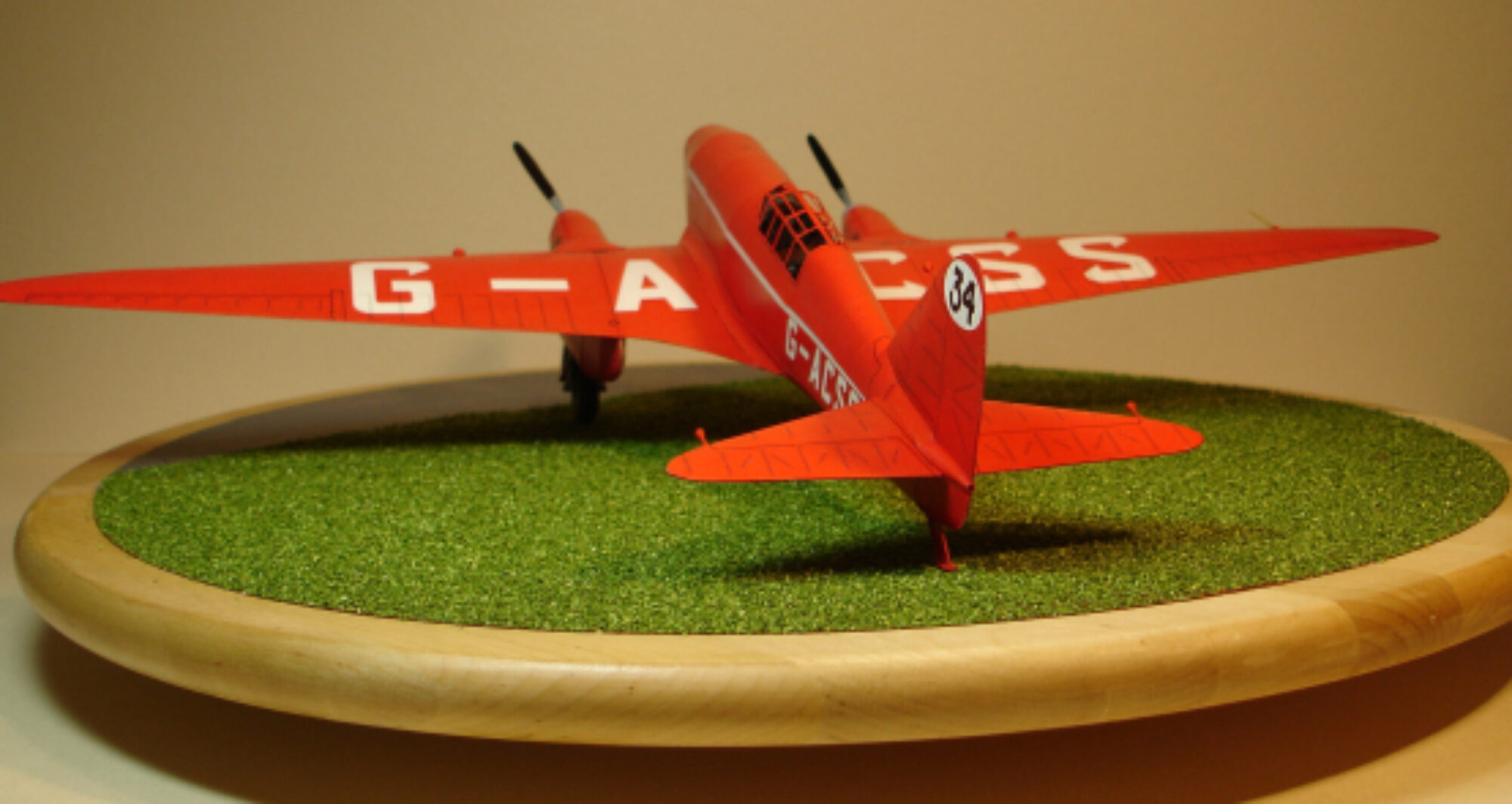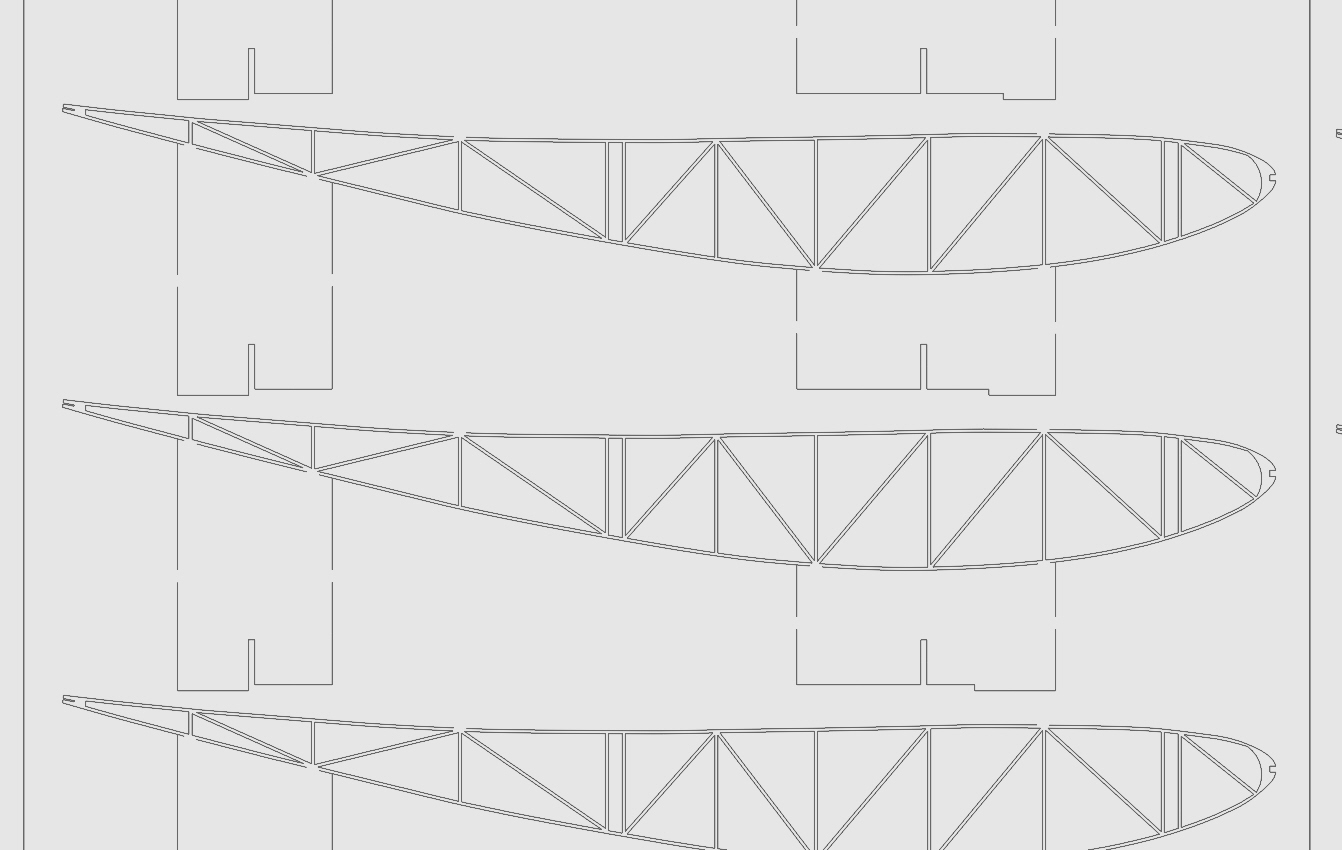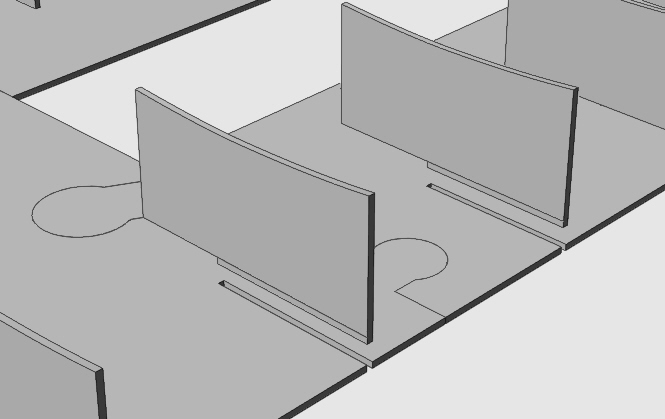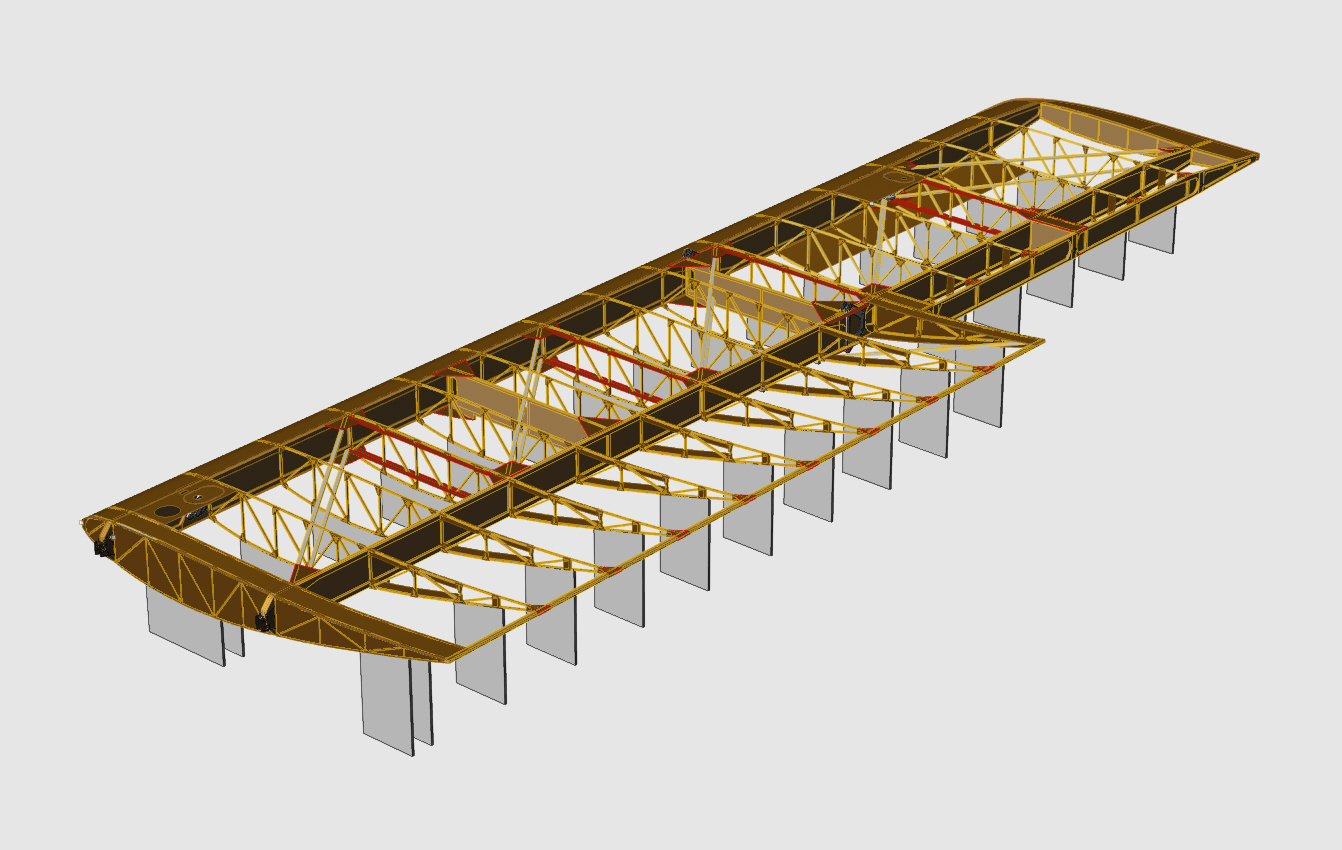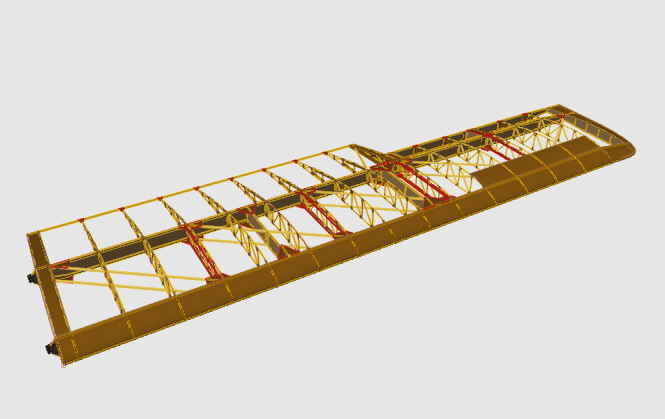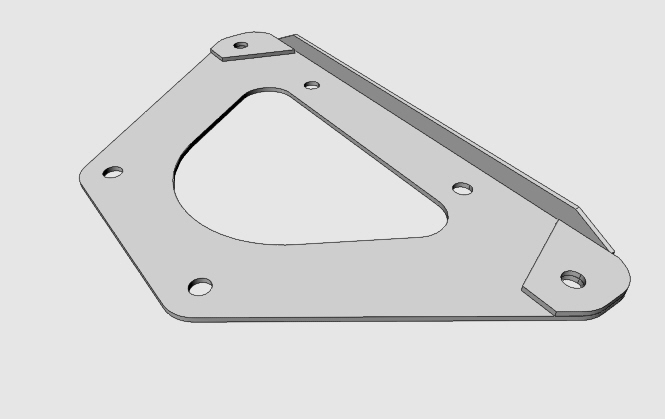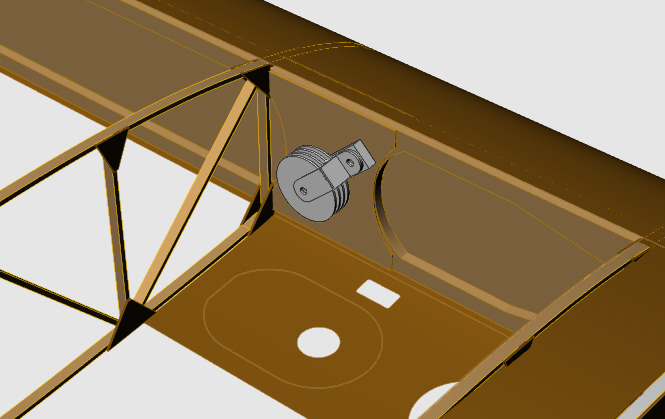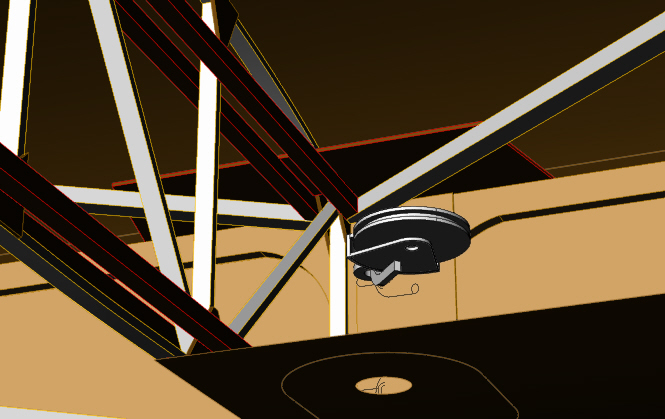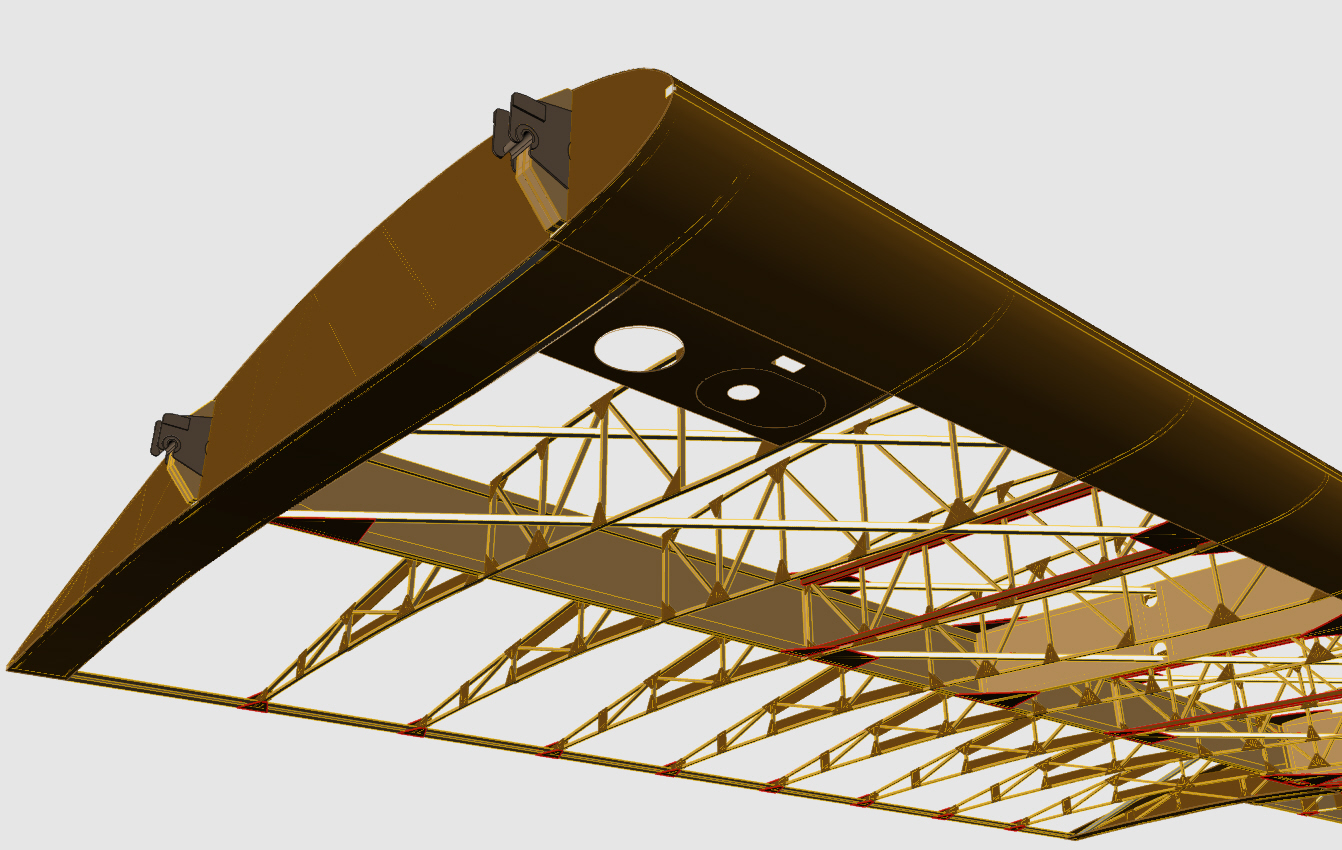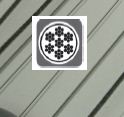After finishing the wing and doing a lot (!) of boolean ops for the tabs and slots I started creating the apges to be used to lasercut the 1mm parts. This included converting everything into two layers. One layer will be used for cutting, the other layer will be used for engraving.
I also had to take care of the little tabs/bridges that keep the cut parts from falling out immediately. For cutting efficiency I tried to keep these as few as possible.
As you can see for the spars I ended up dividing them into two parts and I used an A3 sheet. Note to myself: Don’t use this type of spar for a functional model!
